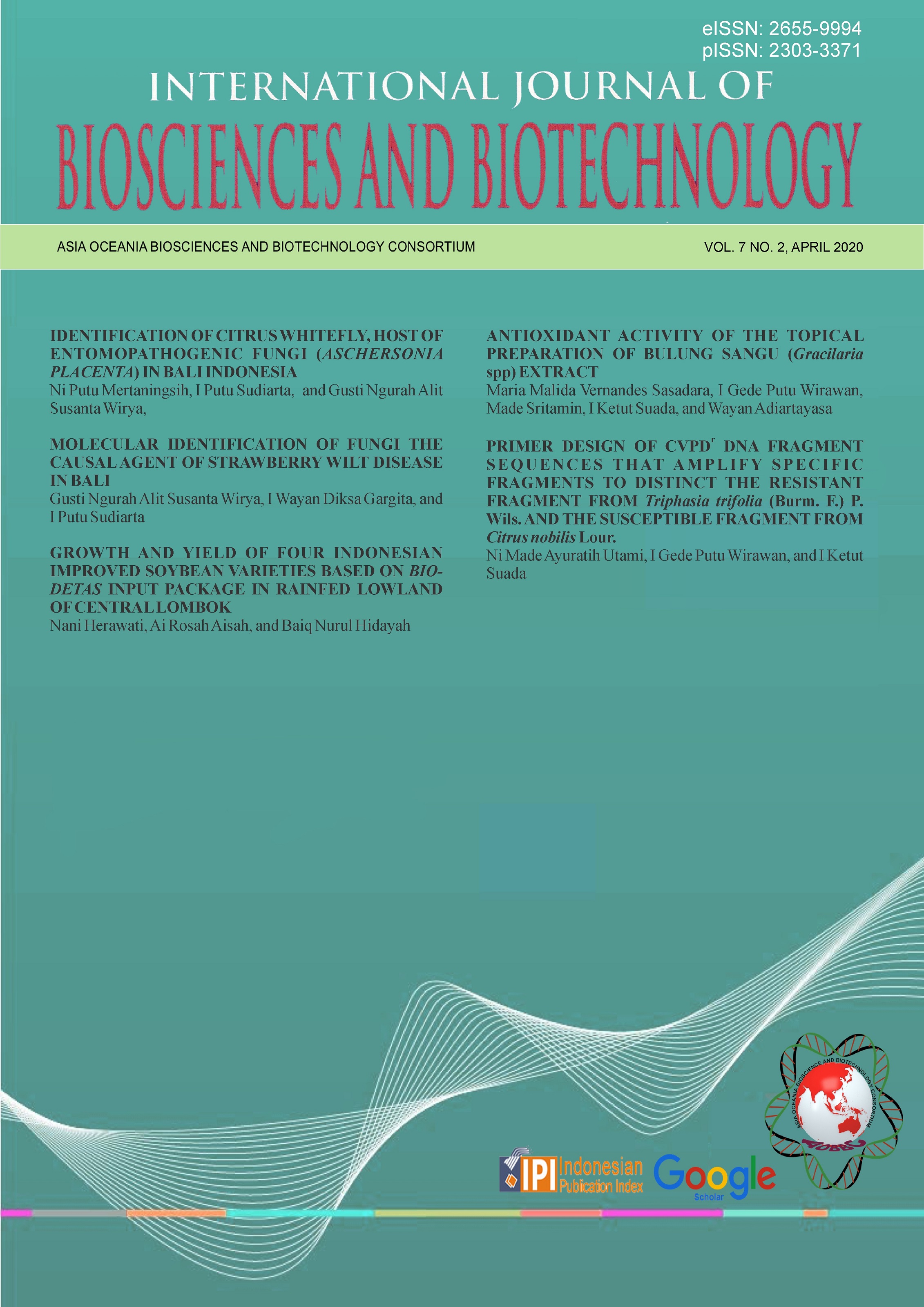MOLECULAR IDENTIFICATION OF FUNGI THE CAUSAL AGENT OF STRAWBERRY WILT DISEASE IN BALI
Abstract
The development of strawberry farming in Bali experiencing some obstacles that cause a decline in production, such as wilting disease. The disease was reported caused by the fungi base on morphological recognition. There are two fungi were recognized caused the strawberry wilt disease in Bali, they are from genus Verticillium and Fusarium. More specific information about causal agent of wilt disease in strawberry especially in Bali is needed. The one accurate identification is done through the molecular approach by analyzing DNA that encode the ribosomal DNA (rDNA). The 18S rDNA, including the internal areas of transcribed spacers (ITS), ITS1 and ITS4 have been widely used in phylogenetic studies. The amplification results of this area produce bands in different sizes that can be used to identify fungal species. Based on that the identification of strawberry wilt disease using molecular analysis was conducted. The 542 bp of Internal Transcribed Spacer (ITS) DNA was successfully amplified using PCR with pairing primers ITS 1 (5-TCCGTAGGTGAACCTGCGG-3’), and ITS 4 (5’-TCCTCCGCTTATTGATATGC-3’). The sequences of three isolates were successfully obtained through sequencing. Homology levels were tested between sequences and showed that Candi Kuning sequence and Gobleg sequence had 95% similarity with sequence of Fusarium oxysporum NRRL 13307 (U34571) from America. While Pancasari sequence have 94% similarity with sequence of Fusarium oxysporum NRRL 13307 (U34571) from America. Candi Kuning, Gobleg, and Pancasari sequences had the same 86% with sequence of Fusarium oxysporum isolate C34-294 Brazil (KJ439088) and had 89% similarity with sequence Fusarium oxysporum f.sp. fragariae China (KT833080). Homology levels were tested between sequences and showed that Candi Kuning sequence and Gobleg sequence had 95% similarity with sequence of Fusarium oxysporum NRRL 13307 (U34571) from America. While Pancasari sequence have 94% similarity with sequence of Fusarium oxysporum NRRL 13307 (U34571) from America. Candi Kuning, Gobleg, and Pancasari sequences had the same 86% with sequence of Fusarium oxysporum isolate C34-294 Brazil (KJ439088) and had 89% similarity with sequence Fusarium oxysporum f.sp. fragariae China (KT833080). Based on phylogeny analysis of Pancasari, Gobleg and Candi Kuning isolates were obtained in one group with Fusarium oxysporum identified in America and Brazil, and also in one group with Fusarium oxysporum f. sp. fragariae that identified in China.






